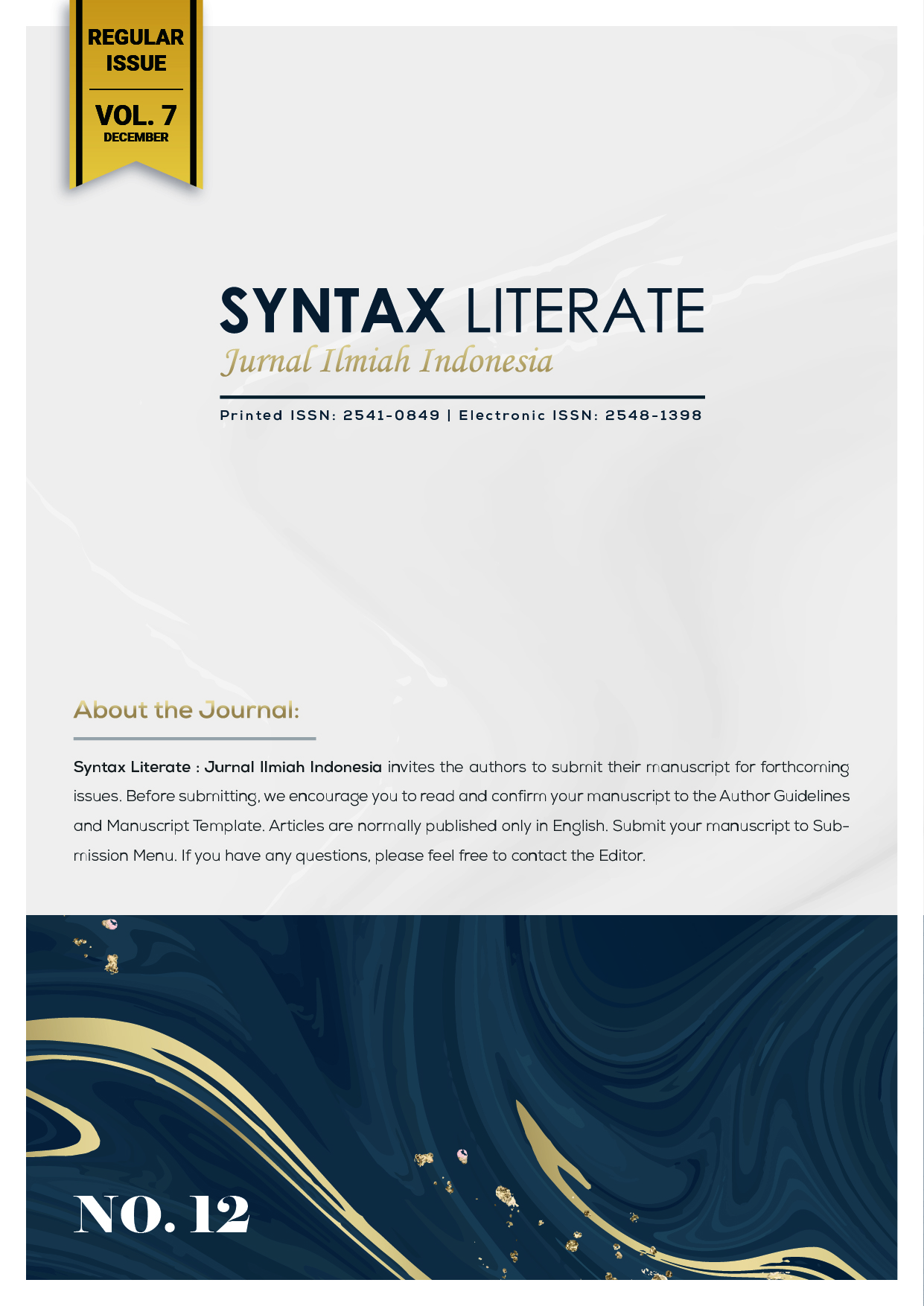Implementation Internet of Things Using Linear Regression Method For Supply Chain Management System
Abstract
The Indonesian ministry of the industry stated that the development of industry must be a formidable industrial country in the world by 2025 and has carbon neutrality by 2060. This goal must be considered related to the distance of the supplier location from the industrial and it increases the gas emissions in the air. In this research, the proposed a solution for optimizing the delivery of material supplies from suppliers to the industry. The protocol communication uses the MQTT protocol to connect the device with a broker. This system will collect the information from sensors such as DHT 11, MQ-05, RFID, and other sensors to record the data, track the location, and validate the person accessing the goods and the data in a document. The data can be used as decision-making material using the regression linear method specifically at humidity and temperature. This device will connect to the user's smartphone by using an application that is connected by an online MQTT broker and see the condition of the goods, track the location of the delivery, and control the device from anywhere. The experiment result shows that the device can monitor temperature, humidity, CO2, LPG gas, and smoke gas. It also used the linear regression method used for determine the impact of the correlation between temperature and humidity at supply storage. The model summary states that the slope (B1) value is -1.8637 with a constant (B0) of 110.1554. B1 has a negative value. So, it can be concluded that the temperature variable negatively correlates with humidity. This method will be useful for the system to do some action to stabilize the condition inside the supply room such as giving a notification to the driver or turning on several pieces of equipment automatically to recover the condition. The proposed system is an IoT system using the openHAB platform as a UI that will be used in this system with a linear regression method to find the relationship between system parameters.
Downloads
References
Banerjee, A. (2018). Blockchain technology: supply chain insights from ERP. In Advances in computers (Vol. 111, pp. 69–98). Elsevier. https://doi.org/10.1016/bs.adcom.2018.03.007
Bekti, P. (2022). Implementation of Defense Industry Policies in Supporting Maritime Defense in Indonesia. Journal of Industrial Engineering & Management Research, 3(3), 293–298. https://doi.org/10.7777/jiemar.v3i3.367
Bibri, S. E. (2018). The IoT for smart sustainable cities of the future: An analytical framework for sensor-based big data applications for environmental sustainability. Sustainable Cities and Society, 38, 230–253. https://doi.org/10.1016/j.scs.2017.12.034
Bisquert, M., Sánchez, J. M., & Caselles, V. (2016). Evaluation of disaggregation methods for downscaling MODIS land surface temperature to Landsat spatial resolution in Barrax test site. IEEE Journal of Selected Topics in Applied Earth Observations and Remote Sensing, 9(4), 1430–1438. https://doi.org/10.1109/JSTARS.2016.2519099
Brunette, W., Sudar, S., Worden, N., Price, D., Anderson, R., & Borriello, G. (2013). ODK tables: building easily customizable information applications on Android devices. Proceedings of the 3rd ACM Symposium on Computing for Development, 1–10. https://doi.org/10.1145/2442882.2442898
De Vass, T., Shee, H., & Miah, S. J. (2021). Iot in supply chain management: a narrative on retail sector sustainability. International Journal of Logistics Research and Applications, 24(6), 605–624. https://doi.org/10.1080/13675567.2020.1787970
Hackett, R. A., Belitz, M. W., Gilbert, E. E., & Monfils, A. K. (2019). A data management workflow of biodiversity data from the field to data users. Applications in Plant Sciences, 7(12), e11310. https://doi.org/10.1002/aps3.11310
Holmes, D., Papathanasaki, M., Maglaras, L., Ferrag, M. A., Nepal, S., & Janicke, H. (2021). Digital Twins and Cyber Security–solution or challenge? 2021 6th South-East Europe Design Automation, Computer Engineering, Computer Networks and Social Media Conference (SEEDA-CECNSM), 1–8. https://doi.org/10.1109/SEEDA-CECNSM53056.2021.9566277
Kamble, S. S., Gunasekaran, A., Parekh, H., Mani, V., Belhadi, A., & Sharma, R. (2022). Digital twin for sustainable manufacturing supply chains: Current trends, future perspectives, and an implementation framework. Technological Forecasting and Social Change, 176, 121448. https://doi.org/10.1016/j.techfore.2021.121448
Monostori, L., Kádár, B., Bauernhansl, T., Kondoh, S., Kumara, S., Reinhart, G., Sauer, O., Schuh, G., Sihn, W., & Ueda, K. (2016). Cyber-physical systems in manufacturing. Cirp Annals, 65(2), 621–641. https://doi.org/10.1016/j.cirp.2016.06.005
Morgan, A. B., & Gilman, J. W. (2013). An overview of flame retardancy of polymeric materials: application, technology, and future directions. Fire and Materials, 37(4), 259–279. https://doi.org/10.1002/fam.2128
Pender, B., Currie, G., Delbosc, A., & Shiwakoti, N. (2014). Social media use during unplanned transit network disruptions: A review of literature. Transport Reviews, 34(4), 501–521. https://doi.org/10.1080/01441647.2014.915442
Preindl, R., Nikolopoulos, K., & Litsiou, K. (2020). Transformation strategies for the supply chain: The impact of industry 4.0 and digital transformation. Supply Chain Forum: An International Journal, 21(1), 26–34. https://doi.org/10.1080/16258312.2020.1716633
Sicari, S., Rizzardi, A., Grieco, L. A., & Coen-Porisini, A. (2015). Security, privacy and trust in Internet of Things: The road ahead. Computer Networks, 76, 146–164. https://doi.org/10.1016/j.comnet.2014.11.008
Copyright (c) 2022 Muhammad Agus Zainuddin, Oktafian Sultan Hakim, Sritrusta Sukaridhoto, Hestiasari Rante

This work is licensed under a Creative Commons Attribution-ShareAlike 4.0 International License.











